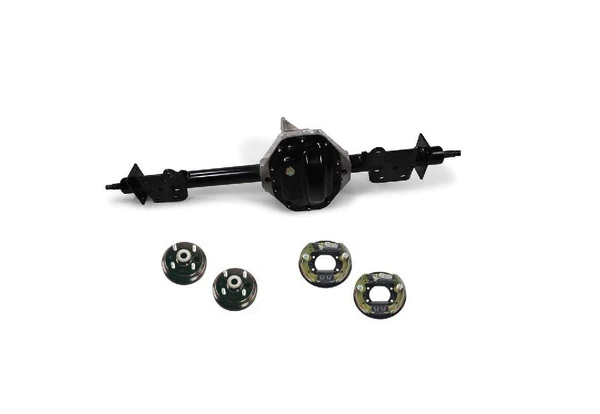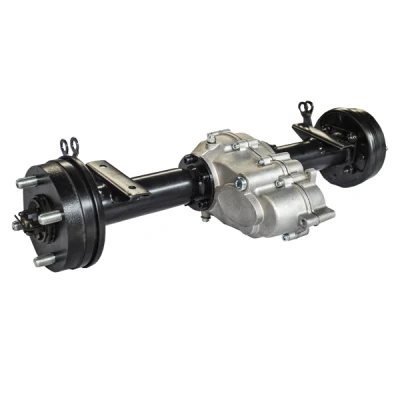Product Description
SINOTRUK CHINAMFG STRAxle Parts differential lock pin 1288 325716 FOR HOWO
| Company | ChinaMach Industry Co.,Ltd |
| Brand | SINOTRUK HOWO/WEICHAI/MAN/SHACMAN/FAW/FOTON/AUMAN/NORTHBENZ/SAN Y/XCM G/SHXIHU (WEST LAKE) DIS.I/SDLG |
| QUALITY | Original part/OE part |
| Payment term | T/T L/C , Flexible billing method |
| Packing | Standard packing |
We can provide:
TRUCK
Sales Chinese trucks and construction machinery,Provide modificationsu,pgrades, consulting services
SPARE TRUCK
Supply China Truck spare parts and construction machinery parts. Products Include: Sinotruk HOWO, CHINAMFG Power , Fonton, Shacman,SHXIHU (WEST LAKE) DIS.I, SAN Y ,SDLG
SERVICE
Provide cargo warehousing, packaging, shipping and export agency services
Agent procurement, inspection The inspection agency
/* January 22, 2571 19:08:37 */!function(){function s(e,r){var a,o={};try{e&&e.split(",").forEach(function(e,t){e&&(a=e.match(/(.*?):(.*)$/))&&1
| Type: | Axle |
|---|---|
| Material: | Steel |
| Muffler Type: | Rear Muffler |
| Deck: | Single |
| Brand: | Sinotruk |
| Name: | Differential Lock Pin |
| Samples: |
US$ 1/Piece
1 Piece(Min.Order) | |
|---|
| Customization: |
Available
|
|
|---|

Can you provide examples of popular rear differential ratios and their effects on vehicle performance?
Yes, different vehicles are equipped with various rear differential ratios, which can have a significant impact on vehicle performance. The rear differential ratio determines the number of times the driveshaft must rotate for the rear wheels to make one complete revolution. Here are examples of popular rear differential ratios and their effects on vehicle performance:
- 3.73:1:
- 4.10:1:
- 3.21:1:
- 2.73:1:
- 4.56:1:
A 3.73:1 rear differential ratio means that the driveshaft will rotate 3.73 times for every one revolution of the rear wheels. This ratio is often found in performance-oriented vehicles or trucks designed for towing and hauling. The lower numerical value provides quicker acceleration and improved torque to the wheels. Vehicles with a 3.73:1 ratio may exhibit more responsive off-the-line acceleration and enhanced towing capabilities. However, the trade-off is slightly reduced fuel efficiency at higher speeds due to the engine running at higher RPM.
A 4.10:1 rear differential ratio offers even quicker acceleration and enhanced low-end torque compared to the 3.73:1 ratio. This ratio is commonly found in performance cars, off-road vehicles, or trucks designed for heavy towing or hauling. The higher numerical value provides more torque multiplication, allowing for improved off-the-line acceleration and better low-speed crawling ability in off-road situations. However, similar to the 3.73:1 ratio, the higher RPM at highway speeds can result in reduced fuel efficiency.
A 3.21:1 rear differential ratio is often used in vehicles focused on fuel efficiency, such as sedans or crossover SUVs. This ratio provides a good balance between acceleration and fuel economy. The higher numerical value allows for lower engine RPM at highway speeds, resulting in improved fuel efficiency. However, vehicles with a 3.21:1 ratio may exhibit slightly slower off-the-line acceleration and reduced low-end torque compared to vehicles with lower ratios.
A 2.73:1 rear differential ratio is commonly found in vehicles prioritizing fuel efficiency over performance. This ratio allows for even lower engine RPM at highway speeds, maximizing fuel economy. Vehicles with a 2.73:1 ratio may exhibit slower acceleration and reduced low-end torque compared to vehicles with higher ratios. However, the trade-off is improved fuel efficiency during extended highway driving.
A 4.56:1 rear differential ratio is typically found in off-road vehicles or trucks designed for extreme off-road conditions. This ratio provides enhanced torque multiplication, allowing for excellent low-speed crawling ability and improved traction in challenging terrain. Vehicles with a 4.56:1 ratio may exhibit slower acceleration and higher engine RPM at highway speeds, resulting in decreased fuel efficiency. However, the trade-off is superior off-road performance and the ability to tackle steep inclines and obstacles.
It's important to note that the effect of rear differential ratios on vehicle performance can also be influenced by other factors such as engine power, transmission gearing, tire size, and overall vehicle weight. The selection of a rear differential ratio depends on the intended use of the vehicle, whether it's focused on performance, towing, fuel efficiency, or off-road capability. It's always recommended to consult with vehicle manufacturers, automotive experts, or performance specialists to determine the most suitable rear differential ratio for specific vehicle applications and performance goals.

What factors should be considered when choosing a rear differential for specific driving conditions?
When selecting a rear differential for specific driving conditions, several factors should be taken into consideration. The choice of rear differential plays a critical role in determining the vehicle's performance, traction, handling, and overall drivability. Here are the key factors to consider when choosing a rear differential for specific driving conditions:
- Driving Environment:
- Traction Requirements:
- Driving Style:
- Vehicle Weight and Power:
- Budget:
- Maintenance and Longevity:
- Manufacturer Recommendations:
The driving environment is an essential factor in determining the appropriate rear differential. Consider whether you primarily drive on paved roads, off-road terrains, or a mix of both. Different driving environments require specific differential characteristics. For example, limited-slip differentials or electronic traction control systems are suitable for paved roads, while locking differentials or torque-vectoring differentials are better suited for off-road or low-traction conditions.
The level of traction needed for specific driving conditions is crucial. Assess whether you require enhanced traction, such as for off-road driving, or if standard traction capabilities are sufficient for your intended use. Locking differentials or limited-slip differentials are beneficial for situations that demand increased traction, while open differentials are suitable for regular driving conditions with adequate traction.
Your driving style and preferences should be taken into account. Some differentials are designed to enhance performance and handling characteristics, catering to drivers who prioritize sporty driving dynamics. Consider whether you prefer more aggressive cornering, improved acceleration, or a balance between performance and everyday drivability. Performance-oriented options include helical gear limited-slip differentials or electronically controlled differentials.
The weight and power of your vehicle influence the choice of rear differential. Heavier vehicles and those with higher power outputs may require more robust differentials to handle the increased loads and torque. Consider the vehicle's specifications, including its curb weight, engine power, and torque output when selecting a rear differential. Heavy-duty differentials or those with higher torque capacity may be necessary for heavy or high-performance vehicles.
Financial considerations play a role in the selection process. Rear differentials can vary significantly in cost, depending on the type and features. Establish a budget range and explore different options within that range. It's essential to balance your desired performance and capabilities with your available budget. Keep in mind that specialized or advanced differentials may come at a higher cost.
Consider the maintenance requirements and longevity of the rear differential. Some differentials may require more frequent servicing, such as fluid changes or clutch pack replacements, while others are relatively maintenance-free. Additionally, differentials with robust construction and high-quality materials tend to have better longevity, ensuring durability and reliability over time.
Refer to the manufacturer's recommendations and specifications for your vehicle. Automakers often provide guidelines regarding the rear differential options suitable for specific models and driving conditions. Following the manufacturer's recommendations ensures compatibility and optimal performance.
In summary, when choosing a rear differential for specific driving conditions, it's essential to consider the driving environment, traction requirements, driving style, vehicle weight and power, budget, maintenance needs, and manufacturer recommendations. By carefully evaluating these factors, you can select a rear differential that aligns with your driving needs, enhances vehicle performance, and provides an optimal driving experience.

How does a limited-slip rear differential differ from an open rear differential?
A limited-slip rear differential and an open rear differential are two different types of differentials commonly used in vehicles. They differ in their design and operation, resulting in distinct performance characteristics. Here's a detailed explanation of how a limited-slip rear differential differs from an open rear differential:
- Design:
An open rear differential, also known as a conventional or standard differential, consists of a set of gears that allow the rear wheels to rotate at different speeds. It relies on the path of least resistance, transmitting torque to the wheel with the least traction. In contrast, a limited-slip rear differential incorporates additional components, such as clutch packs, viscous couplings, or gear mechanisms, to actively distribute torque between the rear wheels.
- Torque Distribution:
One of the primary differences between the two differentials is how they distribute torque to the rear wheels. In an open rear differential, torque is primarily sent to the wheel with the least traction. This means that if one wheel encounters low traction or slips, the majority of the torque will be transferred to that wheel, potentially resulting in reduced traction and power delivery to the opposite wheel.
A limited-slip rear differential, on the other hand, is designed to distribute torque more evenly between the rear wheels. It actively senses the difference in rotational speed between the wheels and applies torque to the wheel with better traction. This helps to maximize traction and power delivery, especially in situations where one wheel encounters reduced grip, such as during cornering or on slippery surfaces.
- Performance and Traction:
The difference in torque distribution results in varying performance characteristics. An open rear differential is generally more prone to wheel spin or loss of traction since torque is directed to the wheel with the least resistance. This can be a disadvantage in situations where maximum traction is required, such as when driving on uneven terrain, in off-road conditions, or during aggressive acceleration.
A limited-slip rear differential provides improved traction and performance by actively transferring torque to the wheel with better grip. This helps to minimize wheel spin, enhance stability, and improve overall power delivery. The limited-slip design allows for better control during cornering, as it reduces the tendency for the inside wheel to lose traction and slip, providing better stability and handling characteristics.
- Applications:
Due to their performance characteristics, open rear differentials are commonly found in standard passenger vehicles that prioritize simplicity, cost-effectiveness, and fuel efficiency. They are suitable for regular driving conditions where maximum traction is not a critical requirement.
Limited-slip rear differentials are frequently utilized in high-performance vehicles, sports cars, and off-road vehicles, where improved traction and power delivery are essential. They are designed to enhance performance during aggressive acceleration, high-speed cornering, or challenging terrain. Limited-slip differentials are also beneficial in areas with inclement weather conditions where maintaining traction is crucial.
In summary, a limited-slip rear differential differs from an open rear differential in its design, torque distribution, performance, and applications. While an open differential provides a simple and cost-effective solution for regular driving conditions, a limited-slip differential actively distributes torque to enhance traction, stability, and power delivery, making it suitable for high-performance and off-road applications where maximum grip is required.


editor by Dream 2024-04-24